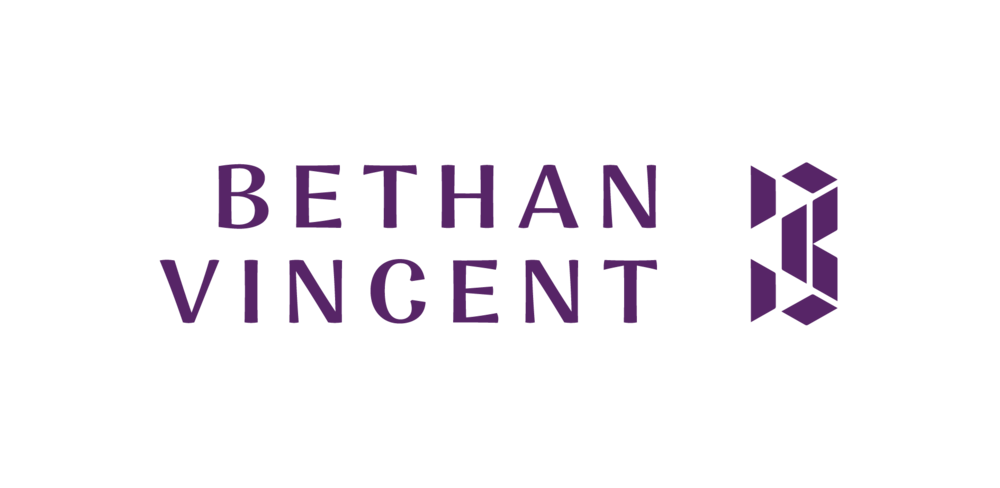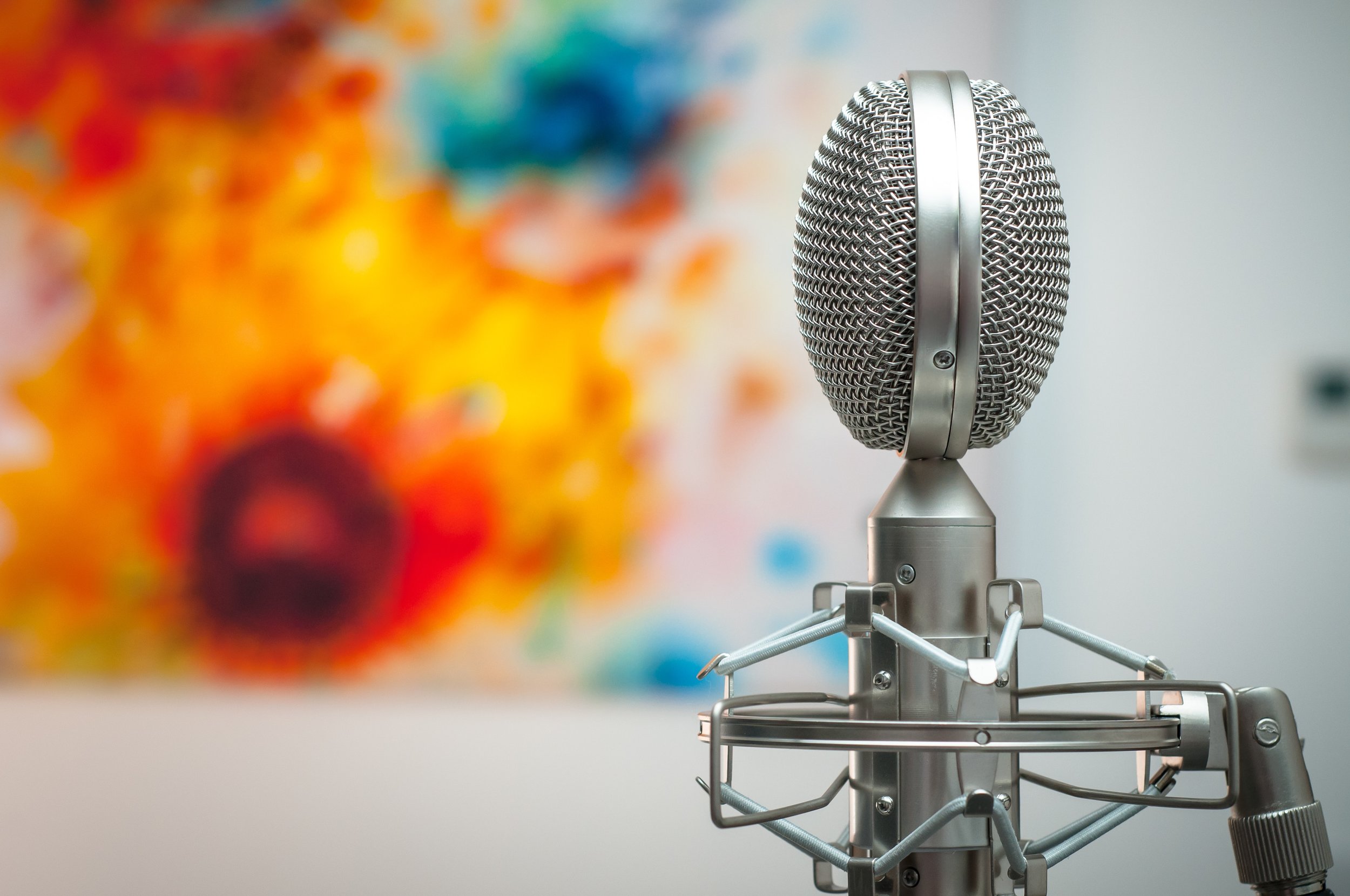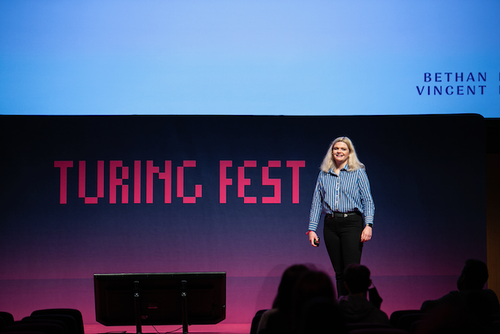This is how I developed and launched my first podcast, The Brave, in under 2 months
There's that weird time between Christmas and New Year’s Day where time seems to flex and bend into some sort of unknowable mess through the haze of chocolate and port.
It was exactly during this no-person’s land period of the 2018 Christmas Holiday that I came up with the idea for my podcast, The Brave.
I actually remember the “aha” moment well, as I was standing in the shower after a long day in the Lake District (we had completed a one hour walk followed by three hours of drinking wine, tiring work, what can I say).
Like most reasonably decent ideas, it came to me without provocation. As a recently initiated listener of podcasts, I knew they were a media format that really appealed to me. Also as someone with a professional interest in “content” and marketing, it was clear that the podcast space was about to explode (even more) and to keep ahead, I would need to understand it.
Since this fateful shower I have gone on to develop and release a podcast series that has had hundreds of plays from an audience that is increasingly spanning multiple countries.
Alongside working out how to market and distribute my work, I’ve also had to learn the technical aspects of recording and editing episodes. I also have the luxury of a talented partner who helps with the final audio editing of each episode.
However if you’re tackling a podcast project solo, don’t be put off by a lack of equipment or technical expertise - it’s honestly not that hard!
For anyone looking to set up their own podcast series, this is my guide on how I went from that initial idea to reality in less than a few months.
Step 1: Think about your subject/audience fit.
Like any product, digital or physical, successful podcasts do need their own form of product/market fit, or in this case subject/audience fit.
In the increasingly over-saturated podcast market, you need to ensure that your podcast appeals to an identifiable target audience who have a need for, or affinity with, your subject matter.
For example, The Brave was initially designed to appeal to men and women aged between 25-35 who work in the knowledge economy (mostly the creative and tech industries). They are likely to be urban, liberal and degree educated.
This level of understanding will help you develop a compelling description and tone of voice that connects with people who will ultimately be interested in the content you produce.
It’s important to note that the tighter your audience and niche, the easier you will probably find it to market your podcast and reach your intended audience.
Think about the search terms they would use to find you and whether that space is crowded. If you’re aiming to be a generic “business podcast” - it’s likely you will be competing with thousands of others doing the same thing.
Step 2: Decide on a Name, Visual Identity and Format
When it comes to naming your podcast, the trick is to be both memorable and searchable. Ideally you want to appear in the top of the SERP and podcast platform results page. It’s therefore important to do a bit of research beforehand to ensure your chosen name is available and not too competitive.
Alongside a compelling name and description, your podcast will also need a strong visual identity in order to stand out from the competition and attract potential listeners.
This branding doesn’t need to be an extensive or costly exercise. I created the initial visuals for The Brave using Canva.
At a bare minimum, you will need a square thumbnail icon which is the format used on most podcast platforms. Ideally you would also create a banner image for social media.
At this stage it’s also worth thinking about your podcast’s format. Is it going to be just you in each episode or will you be inviting guests on, or a mixture of both?
You also might want to consider having a co-host, which can be a great way of ensuring you always have someone to bounce off.
Step 3: Choose Your Recording Equipment
I do think that it’s worth investing in a decent microphone from the very beginning. I currently use a rather battered Zoom H2N which is about 10 years old, but still going strong.
I was lucky that my partner is a professional musician who had recording equipment already, however if I was starting out without a helping hand, I would invest in something like the Zoom above or the slightly cheaper model, the Zoom H1N. Both options allow you to record high quality audio directly onto an SD card.
Alongside recording in-person with the Zoom, I also conduct interviews remotely over Skype, which has an in-built recording function. To preserve audio quality on both sides, I ask my interviewee to make a recording on their end using their phone to send across via email after the interview.
(Incidentally this is also the BBC’s preferred way of doing non-studio interviews, which I found out after being recorded for the World Service).
If you’re really strapped for cash, I would recommend getting an external USB microphone which can be connected directly to your laptop for about £20. Failing that, your phone can stand in as a starter mic, though you’ll want to upgrade from this quickly.
Step 4: Choose Your Podcast Hosting Wisely
In order to get your podcast live and available on podcast platforms, you’ll need to give it an online home. Hosting your podcast online enables two things:
Firstly, the hosting platform will act as a file storage system for your audio files, ensuring they are available across the web.
Secondly, your hosting platform will generate the RSS feed which you then submit to directories - eg. Apple Podcasts/iTunes, Spotify, etc. This feed is then automatically updated for the directories whenever you upload a new episode to your hosting platform.
Podcast hosting is generally available via a monthly subscription service. There are a bunch of extra features that come with certain platforms, such as analytics, marketing tools, extra website features and more, but the basic principle is that you need a place to put your audio files.
An important thing to remember is that audio files can be extremely large. It’s therefore important to check the bandwidth available on whichever platform you use.
In the end, after weighing up a few options, I decided to host my podcast with Squarespace, as this enabled me to combine my podcast hosting with my personal website.
Squarespace also has an easy to use interface for adding the metadata (podcast title, episode name, length, show notes etc.) that is required by platforms such as Apple Podcasts.
Step 6: Just Start Recording
Like any project, the devil is in the doing.
If you’re feeling a bit unsure and don’t know where to start with your first episode, I would urge you to just dive in and start. Nobody is perfect in the beginning (lord knows I wasn’t!) and you’ll only get better with pratice.
I actually released the first episode of The Brave to around 10 “beta” listeners in order to gather some extremely valuable feedback before fully launching it into the wild. I would highly recommend doing this, even if you just get a few mates to listen, as they will be able to give you encouragement and constructive criticism.
Step 7: Editing Your Episodes
It’s likely that you’ll mess up, especially at the beginning, which is why it’s really important to get to grips with editing software so that you can remove any bloopers, including stray “ums” and “ahs.”
In all honesty you don’t really need any fancy software to get started here. I began editing The Brave on Garageband, which comes free with MacOS. If you want something a little more powerful try Reaper (which has a free 60 day trial but keeps working indefinitely).
Alongside learning how to chop and remove sections of audio (very easy on both programs), it’s also worth exploring effects such as EQ, which allows you to boost or weaken certain frequencies. For example, if you have a lot of low background noise you can use EQ to partially remove lower frequencies (often found in background noise) and boost the higher frequencies commonly heard in speech.
Another effect worth exploring is dynamic compression, which allows you to smooth out any changes in volume, making it easier for those with headphones, as they don’t need to turn them up and down to adjust large ranges in volume.
Step 6 - Uploading and going Live
Once you’ve recorded and edited your episode, you’ll need to export it as an MP3 and upload it to your podcast host.
In my case, Squarespace makes this process very easy, as you are prompted to provide your podcast’s metadata (episode number, title, length) along with the audio file. These details are required by podcast platforms like Apple Podcasts, so it’s important to ensure they are provided with the episodes.
Once this is completed, you’ll then need to submit the RSS feed to the podcast platform.
This article goes further into the specifics of submitting to the various platforms. However with most of them, once you’ve submitted and validated your RSS feed once, episodes will be automatically added on-platform once you’ve uploaded them to your podcast host. That’s the beauty of RSS feeds!
Step 7: Marketing Your Podcast
This is a subject that deserves a whole blog post in its own right, however here are a few pointers that I’ve picked up along the way:
Reviews, recommendations and subscribers improve your podcasts discoverability - actively ask for people to like and follow.
Start building up your podcast’s audience on social media / newsletters pre-launch. This will help boost the above.
Launch with a few episodes, instead of just one. This will help hook-in listeners from the beginning.
Provide value outside of your podcast. For example, I share a daily #TheBraveTip over on twitter to both help my community and expose The Brave to new listeners.
I hope this post is useful to anyone thinking about starting a podcast! If you’re on the fence about it, my best advice is the dive right in and try it out.
If you have any questions about starting a podcast that I didn’t cover in the above, feel free to email me on hello@bethanvincent.com - I’d love to hear from you!











